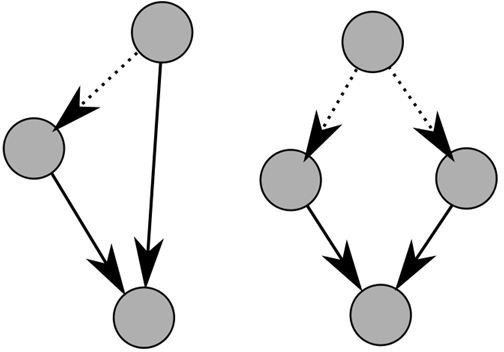Why Trickle-Down Communication Should Not Define Your Project Management Style
Does Information flow or trickle?
As project manager, it is your duty to keep executives, project team members and various management professionals apprised of information related to your project. Of course, a lot of the data should only be disseminated on a need-to-know basis. Even if there is no secrecy attached to any part of the project, managers – rightfully – groan at the notion of seeing their email inboxes fill up with communications about action items that have no bearing on their departments or work load.
Nevertheless, project management is notorious for encountering communication barriers. This is true especially in decentralized enterprises where different management styles lead to varying approaches related to information dissemination. Although ideally information should flow, in some cases it may trickle. It is here that trickle-down communication may actually become a serious liability in the long run. Consider the attitude highlighted by researchers from the Institute for Public Relations (IPR); when information sharing becomes a personal judgment call, it quickly slows down communication. Important data may be missed by key project team members or stakeholders.
The Danger of Trickle-Down
Why is trickle-down communication perhaps the worst possible means of information dissemination? A few highlights – or low lights – showcase the problems:
- Short-sighted censorship: Do you truly know the bigger picture of what matters to other managers in the long run? You are undoubtedly well versed in the needs of your project team and the immediate importance that a piece of information has for them, but can you say the same for other executives?
- Fact suppression: If you have data that could be passed on to project team members, do you occasionally figure that these professionals are already aware of the developments? Make no mistake here! You may be ill informed with respect to facts that are common knowledge among workers and those that need to still be disseminated. Do not create what experts term an “information void.”
- Mistrust: “Employees are suspicious of trickle-down information,” IPR research reveals. A direct approach to communication proves authenticity; a channeled version may be shortened or embellished.
- Information filtering: If you operate in an organization where trickle-down is practiced from the top level on down, you have no guarantee that the communication you receive is ‘straight from the horse’s mouth’. Instead, it may have been censored, changed and filtered in the process of reaching you. Now that it is your turn to pass on crucial elements, you undoubtedly will continue on the practice. Not surprisingly, an atmosphere of skepticism is to be expected.
- Clique formation: Real-life trickle-down communication failures in developing nations show how well-intentioned information spreading via ‘the few’ results in the formation of sharply distinct groups. The United Nation’s Sustainable Development Department explained how agricultural know-how was introduced via this method to the detriment of third world villages. The problem identified was the unequal allocation of resources. Transfer this real-life example into the business setting, and it is clear how the possessors of the information quickly form their own clique that preserves power and advantage by rationing data.
Effective Communication in Project Management
Diverse communication is the best policy when trying to get across facts and figures. There are five surefire ways for improving your 
style today.
- Focus on mid-level team members. Your project teams are probably made up of them as well as low-level workers and top executives. There is statistical evidence to show that the latter two groups are generally content with the information sharing they experience. It is the mid-level worker who is dissatisfied.
- Vary communication methods. Do not be a one-trick pony and only email, text or meet. Instead, vary interpersonal communications with electronic means.
- Over-communicate. Follow up email communication with other modes of information sharing. Depending on the amount of emails a team member receives, your crucial bit of data might just get lost.
- Make it a two-way street. Communication presupposes sharing of ideas. Information dissemination is clearly one-sided.
- Focus on community building. Project team cohesiveness is the key for effectiveness. Communicating clearly, frequently and consistently to each member underscores individual values ascribed to the employees. At the same time, it ensures that everyone is on the same page, which fosters a strong sense of community.
Get the Buy-In
Project management thrives on team member buy-in. The quickest way to lose buy-in – or never generate it in the first place – is through mistrust. The mysterious trickle-down communication style is statistically tied to the development of employee distrust and discontent.
Even if your departmental culture currently thrives on this communication model, it is vital that you break away from the practice and model functioning and effective information-sharing styles instead. Sure, it might feel like swimming upstream for a while; once your success with a new strategy becomes evident, consider offering your expertise to the executive level and assist with making corporate culture changes accordingly.
References
-
Photo Credits:
“Circular reporting” by Underpants/Wikimedia Commons via Creative Commons Attribution 3.0 license
“Levels of communication” by SVilen, sxc.hu, royalty-free license
-
Institute for Public Relations; http://www.instituteforpr.org/wp-content/uploads/White_Vanc_Stafford.pdf
-
United Nation’s Sustainable Development Department; http://www.fao.org/sd/PPdirect/PPre0029.htm
